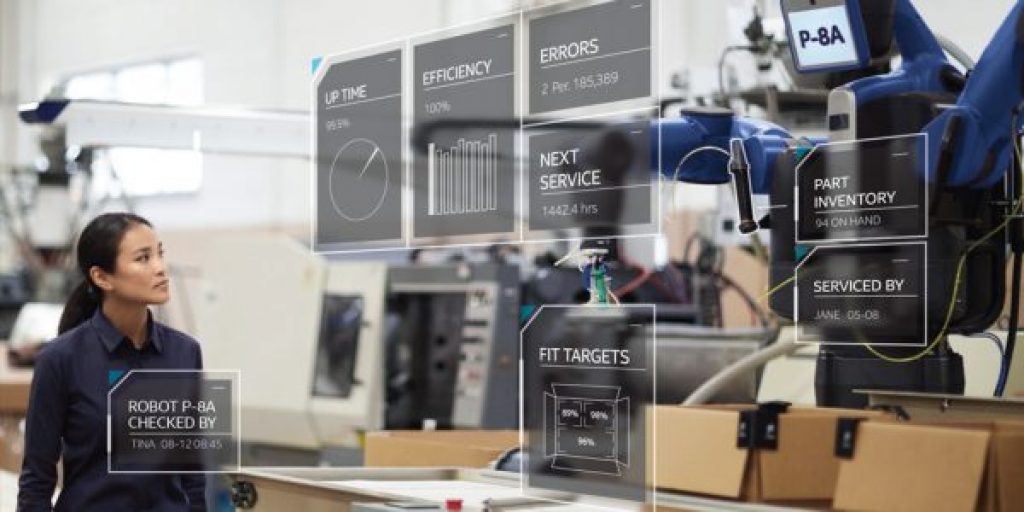New Toolkit Already in Use at Agent Vi, Dahua, Dell, Current by GE, GE Healthcare, Hikvision and Honeywell
 It’s been an amazing year leading the Internet of Things (IoT) Group at Intel. During this time we have been working hard to define and develop a data-driven technology foundation for industry innovation. Our strategy is to drive end-to-end distributed computing in every vertical by focusing on silicon platforms and workload consolidation at the edge.
It’s been an amazing year leading the Internet of Things (IoT) Group at Intel. During this time we have been working hard to define and develop a data-driven technology foundation for industry innovation. Our strategy is to drive end-to-end distributed computing in every vertical by focusing on silicon platforms and workload consolidation at the edge.
Critical to our success is aligning our ecosystem of partners and developers to deliver the benefits. This focused effort is paying off, as Intel’s IoT business grew by 20 percent in 2017 and continued with strong growth in this year’s first quarter.
We are seeing significant growth in IoT markets worldwide, driven in part by a dramatic increase in vision applications, particularly those leveraging artificial intelligence (AI). These imaging and video use cases span nearly every IoT segment. They include finding product defects on assembly lines, managing inventory in retail, identifying equipment maintenance needs in remote locations, and enabling public safety in cities and airports. They all leverage high-resolution cameras and create extraordinary amounts of data, which needs to be aggregated and analyzed.
 Given this expansive data growth, Intel announces the OpenVINO™ (Open Visual Inference & Neural Network Optimization) toolkit. The OpenVINO toolkit is designed to fast-track development of high-performance computer vision and deep learning inference applications at the edge. It is the latest offering in the comprehensive Intel® Vision Products portfolio of hardware and software accelerating deep learning and transforming vision data into business insights.
Given this expansive data growth, Intel announces the OpenVINO™ (Open Visual Inference & Neural Network Optimization) toolkit. The OpenVINO toolkit is designed to fast-track development of high-performance computer vision and deep learning inference applications at the edge. It is the latest offering in the comprehensive Intel® Vision Products portfolio of hardware and software accelerating deep learning and transforming vision data into business insights.
Intelligence and Autonomous Technology Begins with Vision
Processing high-quality video requires the ability to rapidly analyze vast streams of data near the edge and respond in real time, moving only relevant insights to the cloud asynchronously. To process video data efficiently, companies need the right solution for the job. Unlike others with a one-size-fits-all philosophy, Intel believes the market requires a powerful portfolio of scalable hardware and software solutions to move into an intelligent data-powered future. This immediately includes widely deployed and available Intel computing products, including those with integrated graphics, Intel FGPAs and Intel® Movidius™ VPU (Vision Processing Unit).
With the addition of the OpenVINO toolkit to the Intel Vision Product lineup, Intel’s vision solution provides the capability to distribute AI solutions from the edge to the network to the cloud across a diverse set of products. This empowers our customers with the flexibility to economically distribute vision solutions for actionable business insights.
Intel’s Extensive Partner Ecosystem
 Intel® Vision Products and the OpenVINO toolkit are being used by global partners such as Dahua*, for smart city and traffic solutions, GE Healthcare* in medical imaging, and Hikvision* for industrial and manufacturing safety. Additional companies include Agent Vi*, Current by GE*, Dell* and Honeywell*.
Intel® Vision Products and the OpenVINO toolkit are being used by global partners such as Dahua*, for smart city and traffic solutions, GE Healthcare* in medical imaging, and Hikvision* for industrial and manufacturing safety. Additional companies include Agent Vi*, Current by GE*, Dell* and Honeywell*.
Our customers can also integrate the OpenVINO toolkit with devices running AWS GreenGrass for performing ML inference at the edge.
Our deep collaboration with these industry leaders makes one thing clear: Intel provides a future that’s intelligent and transformative.
Technology Choice and Flexibility with Performance
The new OpenVINO toolkit combined with a broad range of advanced silicon provides a complete high-performance solution for edge-to-cloud video analytics and deep learning. It empowers developers to easily deploy deep learning inference and computer vision solutions, leveraging a wide range of common software frameworks like TensorFlow*, MXNet* and Caffe*.
Intel Vision Products, combined with the OpenVINO toolkit, provide developers the flexibility, and choice with performance and power to accommodate the wide range IoT infrastructure.
- Intel CPUs with integrated graphics are commonly used and provide developers access to widely deployed systems that are consistent with existing architectures and products.
- Intel FPGAs provide raw throughput and programming flexibility to rapidly adapt to new networks and applications.
- The Intel Movidius VPU provides cost and power efficiency for constrained environments while delivering performance required for a broad range of applications.
 Intel’s comprehensive vision strategy stretching from the camera to the cloud will accelerate the adoption of video technologies across industries.
Intel’s comprehensive vision strategy stretching from the camera to the cloud will accelerate the adoption of video technologies across industries.
Our deep collaboration with businesses has made one thing clear: Intel no longer sells parts; it is providing an easy and accessible vision.
For more information, check out the OpenVINO toolkit or Intel Vision Products. Come talk to us at the upcoming Embedded Vision Summit May 22-24 or at AI Devcon May 23-24.
Tom Lantzsch is senior vice president and general manager of the Internet of Things (IoT) Group at Intel Corporation.


